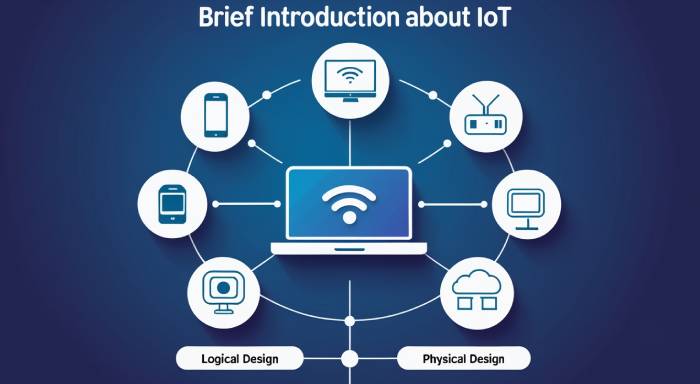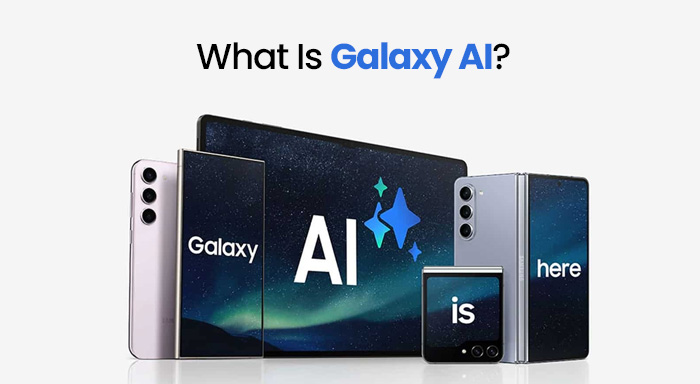There are no doubts Internet of Things (IoT) devices have revolutionized how devices interact, and we connect with one another. This smart interconnectivity has enabled intelligent solutions all across the industry. However, it is a very competitive field for aspirants looking to establish a rewarding career path. Studies suggest that there are already millions of IoT developers worldwide with overall market value expected to go beyond $629.5 billion in 2025. The number will increase as the need for IoT solutions expands worldwide.
Thus, it is important for the IoT developers to be thorough with their IoT concepts. And one of the main concepts, which is generally asked in IoT interview questions is the logical and physical design of IoT. Complete knowledge in logical and physical architecture allows IoT developers to ensure effective implementations.
The concept of IoT logical design covers the overall system architecture. It involves communication protocols, flow of data, and software components. While the physical design of IoT encompasses hardware elements like actuators, sensors, and network infrastructure that makes sure that connectivity is as smooth as possible.
In this complete guide, you will understand the fundamentals of both logical and physical IoT architecture. You will find out how such components collaborate with one another to establish reliable, efficient, and scalable IoT platforms. Irrespective of whether you are a business leader or a developer, comprehending the architectural concepts will aid you in designing and implementing IoT solutions that align with your particular requirements.
The IoT industry is expanding at a fast rate, naturally creating high demand for proficient IoT developers who are thorough with the system architecture. Professional success in this competitive domain requires knowledge of how logical and physical components work together to deliver robust IoT solutions.
Before going deep into the details of architecture, let us understand the fundamentals.
Definition of IoT
IoT is basically interconnectivity between smart devices embedded with sensors and actuators. This robust interconnectivity helps devices share information in real-time. It offers various advantages in industrial applications and home automation. That is why its adoption is growing exponentially all around the world. Let us go through some of the advantages and disadvantages of IoT briefly-
Fundamentals of Logical and Physical Design of IoT
Even if you are a beginner in IoT, you must have used smart devices in your life. You must have had experience with using a fitness tracker, a smart thermostat, and even a biometric scanner in your office. All these devices are nothing but the implementation of a concept known as IoT. However, what makes these smart devices truly “smart” are the core design architectures.
And the design architecture of any IoT system can be broadly classified into two types:
- IoT Physical Design
- IoT Logical
Let us explore them further-
Logical Design: The Brain of IoT
Consider IoT as a single machine rather than a collection of connected system. The “brain” of such a machine is logical design. Essentially, the logical design of your IoT environment is the brain of the entire ecosystem. It determines how information flows, how devices share data, and how this data is stored and processed in the environment. The concept of this logical design then defines data models, protocols, and various rules that determine the operation of IoT system.
Physical Design: The Body of IoT
Now, once we have the brain of the IoT environment, we also need a tangible body. This is determined by the physical design that comprise of microcontrollers, sensors, and network infrastructure that collect and share data in the real world. These are the devices that you can actually observe, touch, and interact with in the physical world. The physical design of IoT is responsible for enforcing the capabilities of IoT into physical spaces.
Having an understanding of both these aspects is pivotal because they are intertwined with one another. Even if you have the most advanced sensors (physical) in the world, they will be useful if you do not have the right data protocols (logical). On the contrary, an efficient software architecture requires dependable hardware for implementation.
In the following sections, let us explore these two concepts in more detail-
Physical Design of IoT
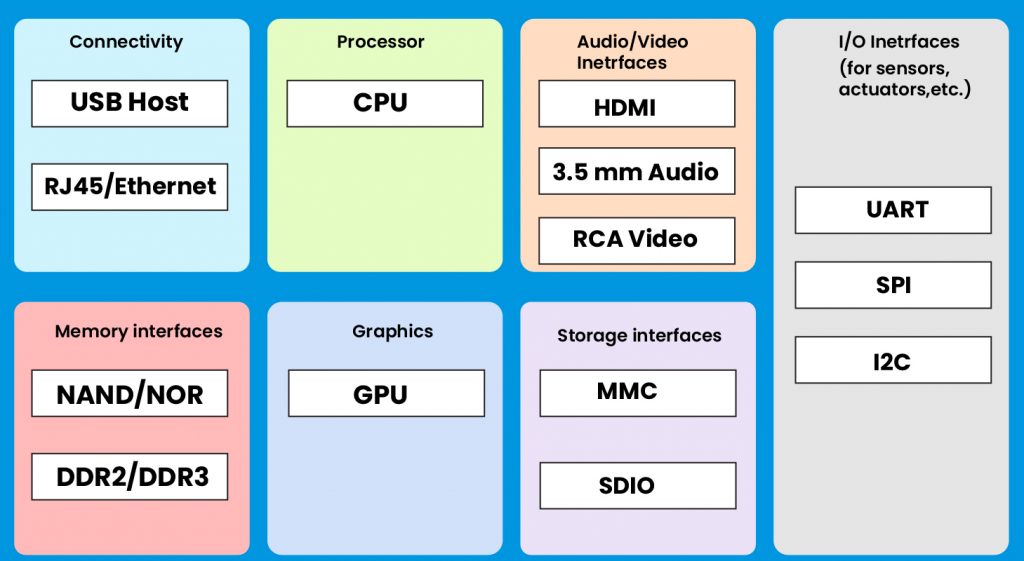
Now let us understand the physical design of IoT from the logical and physical design of IoT. The Physical design of IoT deals with the individual devices connected to the IoT network and the protocols used to create a functional IoT environment. Each IoT device can perform tasks of remote sensing, actuating, monitoring, etc due to the IoT network they are connected to. These can also transmit information and share files through different types of wireless or wired connections. They can generate data, which is used to perform analysis and perform operations for improving the system.
Now let us understand the IoT node devices and the IoT protocols.
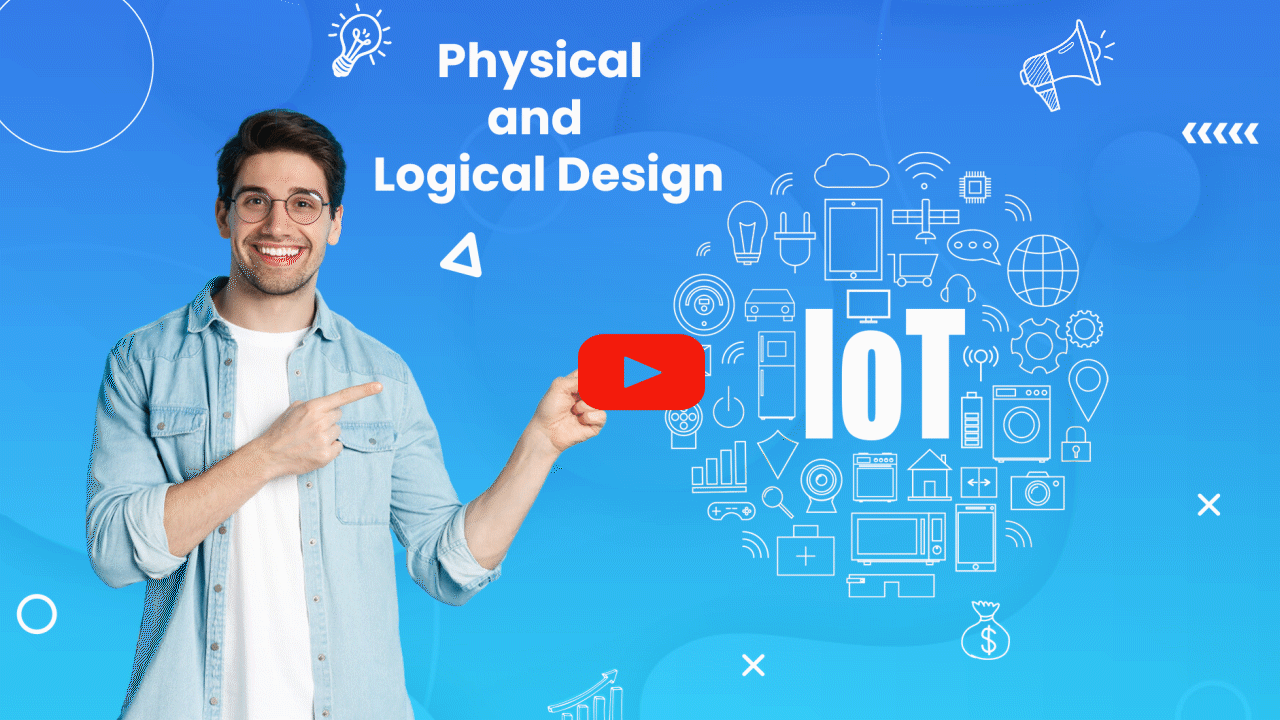
Node Devices
Node devices are used to build a connection, process data, provide interfaces, and store, in an IoT system. They generate data that can be analyzed by the IoT system and programmed to perform operations and improve the system.
Now let's understand which devices are used for which function in an IoT system.
- Connectivity: Devices like USB hosts and ETHERNET provide connectivity between the devices and the server.
- Processor: Processors like the CPU and other units process the data. This is used to improve the decision quality of an IoT system.
- Audio/Video Interfaces: System interfaces like HDMI and RCA devices record audio and video.
- Input/Output interface: Devices like UART, SPI, CAN, etc, give input and output signals to sensors and actuators in iot.
- Storage Interfaces: IoT devices like SD, MMC, and SDIO generate data. Storage interfaces store those data.
- Control of activity: Devices like DDR and GPU control the activity of an IoT system.
IoT Protocols
IoT communication protocols establish between a node device and a server over the internet by sending commands to an IoT device and receiving data from an IoT device. Both the server and client side use different types of protocols. By network layers, they are managed. Some of the network layers are the application, transport, network, and link layers. It works as a building block for the logical and physical design of IoT.
Some of the protocols are
- Application Layer protocol- Protocols in this layer define how the data is sent over the network. With the lower layer protocols, the application interface sends these data. Examples include HTTP, WebSocket, XMPP, MQTT, DDS, and AMQP protocols.
- HTTP (HyperText Transfer Protocol)- This protocol for transmitting media documents in an application layer by communicating between web browsers and servers.
- WebSocket- it enables two-way communication between a client and a host and is mostly web browsers use it.
- Transport Layer- it controls the flow of data segments. It also handles error control and provides end-to-end message transfer capability.
- TCP (Transmission Control Protocol)- It establishes and maintains a network that can exchange data using the internet protocol.
Some of the layers are
- Network Layer- it is used to send datagrams from the source network to the destination network. Some examples are IPv4 and IPv6.
- Link Layer- it is used to send data over the network’s physical layer and determines how the packets are coded and signaled by the devices.
- Ethernet- It is a set of protocols used in LANs that defines the physical layer and the medium access control for LANs.
- WiFi- It is a set of LAN protocols. It specifies the set of media access controls and also the physical layer protocols that are used for implementing wireless LANs.
Logical Design of IoT
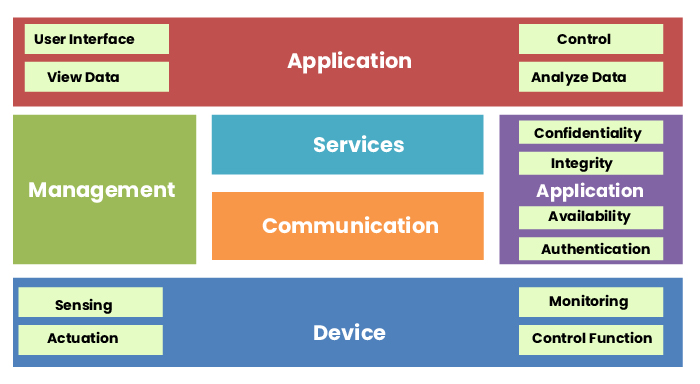
It is the actual design of the IoT system. It illustrates the assembling and configuration of the components i.e. computers, sensors, and actuators.
The logical design of IoT is composed of:
- IoT functional blocks
- IoT communications models
- IoT communication APIs
1. IoT functional blocks
The functional blocks of IoT systems provide sensing, identification, actuation, management, and communication capabilities to the IoT ecosystem. The devices of the functional blocks handle the communication between the server and the host. This enables monitoring of control functions, managing the data transfer, securing the IoT system using authentication, and providing an interface for controlling and monitoring various functions. It is the most crucial part of the logical and physical designs of IoT.
The Functional blocks of IoT are:
- Device
Devices provide sensing, actuation, monitoring, and control functions to the IoT ecosystem. Main examples of devices include RFID tags, sensors, actuators, appliances, gadgets, and machines. They can be connected to the IoT environment either via a cable or a wireless chip
- Communication
Manages communication for the IoT system. It is a fundamental aspect of the Internet of Things because this makes IoT devices capable of communicating with one another or with other systems.
- Services
Services perform the functions of device monitoring, device control, data publishing, and device discovery. In IoT, there is a management service layer who is dedicated toward managing these services.
- Management
Gives functions to govern the IoT system. It includes multiple functions such as tracking and controlling the devices, enforcing security standards, executing segmentation and data encryption, etc.
- Security
Provides security to the IoT system. It performs authentication, authorization, message and content integrity, and data security functions. It basically protects devices and stored information from theft, manipulation, and unauthorized access.
- Application
An interface where the users can control and monitor various aspects of the IoT system. It allows the users to view the system status and analyze the processed data. It provides a user interface and helps users ensure effective utilization of collected data.
2. IoT Communication Models
The communication models of IoT are used for communicating between the system and the server. The types of IoT communication models are
- Request-Response Model
In this communication model, the client sends requests to the server and the server responds to their requests. After receiving a request, the server decides how to respond by fetching the data, retrieving resource representation, preparing the response, and then sending the response to the client. The request-response protocol between a client and a server is HTTP.
- Publisher-Subscriber Model
This model is made up of three entities: Publishers, Brokers, and Consumers.
- Publishers- it is the source of data that sends the data to the topic.
- Consumers- they subscribe to the topics.
- Brokers- they accept data from publishers and send it to the consumers.
- Push-Pull Model
This model is made up of data publishers, data consumers, and data queues.
- Publishers- they publish the message and push it into the queue.
- Consumers- they present on the other side and they pull the data out of the queue.
- Queues- it helps in decoupling the messages between the producer and consumer.
- Exclusive Pair
It is a bi-directional model that includes full-duplex communication between client and server. The client sends a request and the server keeps the record of all the connections. In this model, only WebSocket-based communication API is based.
3. IoT communication API
There are two types of communication APIs –
- REST-based communication APIs
REST stands for Representational State Transfer. It is a set of architectural protocols by which you can design web services and web APIs. These web services and APIs focus on a system’s resources and how resource states are addressed and transferred. It has a request-response communication model. Its architectural constraints are components, connectors, and data elements. All of them are included within a distributed hypermedia system.
The advantages of REST-based communication APIs include:
Flexibility- REST APIs are compatible with a broad range of services and applications. They can support simple web apps to more comprehensive enterprise systems.
Simplicity- The design and implementation process of REST APIs is relatively simple. This is the reason it has emerged as a go-to choice for developing APIs for web applications.
Stateless- Each request in REST API is processed independently of past requests. This makes it easy to distribute and scale.
Caching- REST APIs depend on caching to enhance performance and minimize service load.
- Web Socket-Based Communication APIs
Web Socket API is the bi-directional, full-duplex communication model between clients and servers. It does not require a new connection to set up for each message between clients and servers. After the connection is set the messages can be sent and received continuously without any interruption. It is best for IoT Applications with low latency or high throughput requirements
Check the following points to learn about the advantages of web socket-based communication APIs-
Efficiency- As far as real-time communication is concerned, web socket APIs are more efficient. They leverage continuous connection to ensure bidirectional communication.
Scalability- Since they can provide support to thousands of connections per server, WebSocket APIs are extremely scalable.
Minimized Overhead- Relative to Rest APIs, it has less overhead since it depends on a single connection to transmit information.
Real-time Communication- Web Socket APIs are ideal for applications that depend on real-time updates. They are more preferred because they enable communication between server and client in real-time.
Difference between the Physical designs of IoT & Logical design of IOT
| Physical Design of IoT | Logical Design of IoT |
| It provides an elaborate and detailed overview | It emphasizes the design factors which include the assumptions, requirements, constraints, and risk. |
| It emphasizes the configuration and assembling of any specific entity. | It emphasizes the design factors which include the assumptions, requirement, onstrainsts, and risk. |
| It contains more graphic content than textual content | It comprises both, the textual as well as the graphic content. |
Conclusion
IoT is the building block of many technological advancements these days. Some prominent examples of IoT are connected cars, smart appliances, connected security systems, smart agriculture equipment, connected retail, connected healthcare monitors, connected manufacturing equipment, and connected cities. Hence understanding IoT is crucial if you want to create a smart solution. This article gives an overview of the logical and physical designs of IoT so that you know what makes the smart solutions we use nowadays.
Related Posts
Internet of Things | IoT Design Methodology And Its Importance
Unveiling the Essential Building Blocks of IoT
IoT Data Visualization | Understand the Power of Connected IoT Devices

